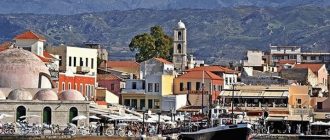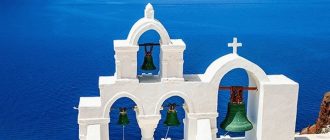07.11.2016
Гомеровский период в истории Греции (11—9 вв. до н. э.)got its name in honor of the famous Homer. His Iliad and The Odyssey became the main sources of information about those times. Although historians still argue how great ones were created works and in general: did Homer himself really exist? And if it existed, then do they own these works?
Doubt adds the fact that the adventures of Odyssey on the way Returns from the Trojan War and the events of this war relate to Mycenaean period. But continue to serve as a source of information about subsequent (Homeric) period. Homer may have created the Iliad. and the Odyssey a few centuries after the past events. None however, this is the legacy of ancient literature – the most important source the value of which is beyond doubt.
Contents
Homer’s era – Dark Ages of Greece
In the XII century. BC. Dorian Greeks are invading Greece. Having settled down in the southeast of the Peloponnese, they took possession of the islands. Sporades and Cyclades, southwest of Asia Minor and part of Crete, displacing the remaining Minoan population from the plains to the mountain areas. This conquest led to regression – drastically reduced. population size, living standards declined, handicrafts declined and construction stopped. Writing has also declined. that is why, besides Homer’s works, not one written evidence. Later, archaeologists will note scarcity archaeological materials calling the Homeric era the definition “Dark Ages”.
Dorians who enslaved the peoples were interested only in the military skills. To adopt, and even more to develop art or crafts were not going to. Only pottery was developed. shipbuilding and metal processing. But with the help of the Dorians Greece moved to the Iron Age – its mining and processing only was starting. Metal became readily available and cheap, which was important for the development of society.
The aggression of the Dorian navigators crossed the important trading communication. “Pirate raids” for them were the cause of pride, and once frequent guests (Egyptian and Phoenician ships) now tried bypass the Greek harbor side. By the end of this era, trade started to build – both external and internal.
A distinctive feature of the Homeric period is the occurrence Homeric style in Greek vazopisi. Otherwise it is called geometrical. It was characterized by the use of geometric elements on vases that were folded from circles, meanders and crosses. At the end of the Homeric period, plots are becoming increasingly intricate and rich. An image appears on the vases competitions of athletes, scenes from myths, dances. Geometric style originated in Athens, and later spread to the islands of the Aegean seas and other ancient greek cities.
The device of society in the Homeric period
At the dawn of the Homeric period, tribal and tribal relations in the Dorian society not only revived, but also strengthened. The basis of society was Demos (people), existing in the policy (city). Early on the existence of a policy there was no private property right land – it belonged to the public, and the dominant power there was a military dictatorship. It was the creation of the policy that triggered the gradual creation of Dorians own civilization.
With the growth of stratification in society arose system slavery. But there is one important difference from the classic ideas about the slave system: slaves were mostly brought from military campaigns. Slave trade brought good money, and many conquests in the Homeric period were organized only for the purpose of the new influx of slaves.
Each polis had its own king, so the Dorian society cannot It was called a strong and united state. The people influenced government affairs: deciding whether to organize a war. And although Homer’s period is considered a time of stagnation and decline, it is impossible deny its influence on the formation of the Greek civilization. To this contributed to the creation of policies and iron mining.
Culture of the Homeric period
 Horse. Heracles and centaur. Bronze figurines
Horse. Heracles and centaur. Bronze figurines
There are almost no cultural monuments from the Homeric period – this caused inconvenience to archaeologists in trying to understand the era. The death of the Mycenaean civilization rejected the Greek culture on a few centuries ago. And all that remained for the researchers was the study of single-type and simple necropolis, the content of which did not go in comparison with the Mycenaean heritage.
Despite the disadvantages, the Homeric period gave Greece a lot good With the help of iron tools it was possible to handle large land area than in the bronze age. By the end of the period not only the population has grown. Public relations, trade and crafts began to actively develop – on the eve archaic period Greece gradually began to recover after the arrival of the Dorians.






